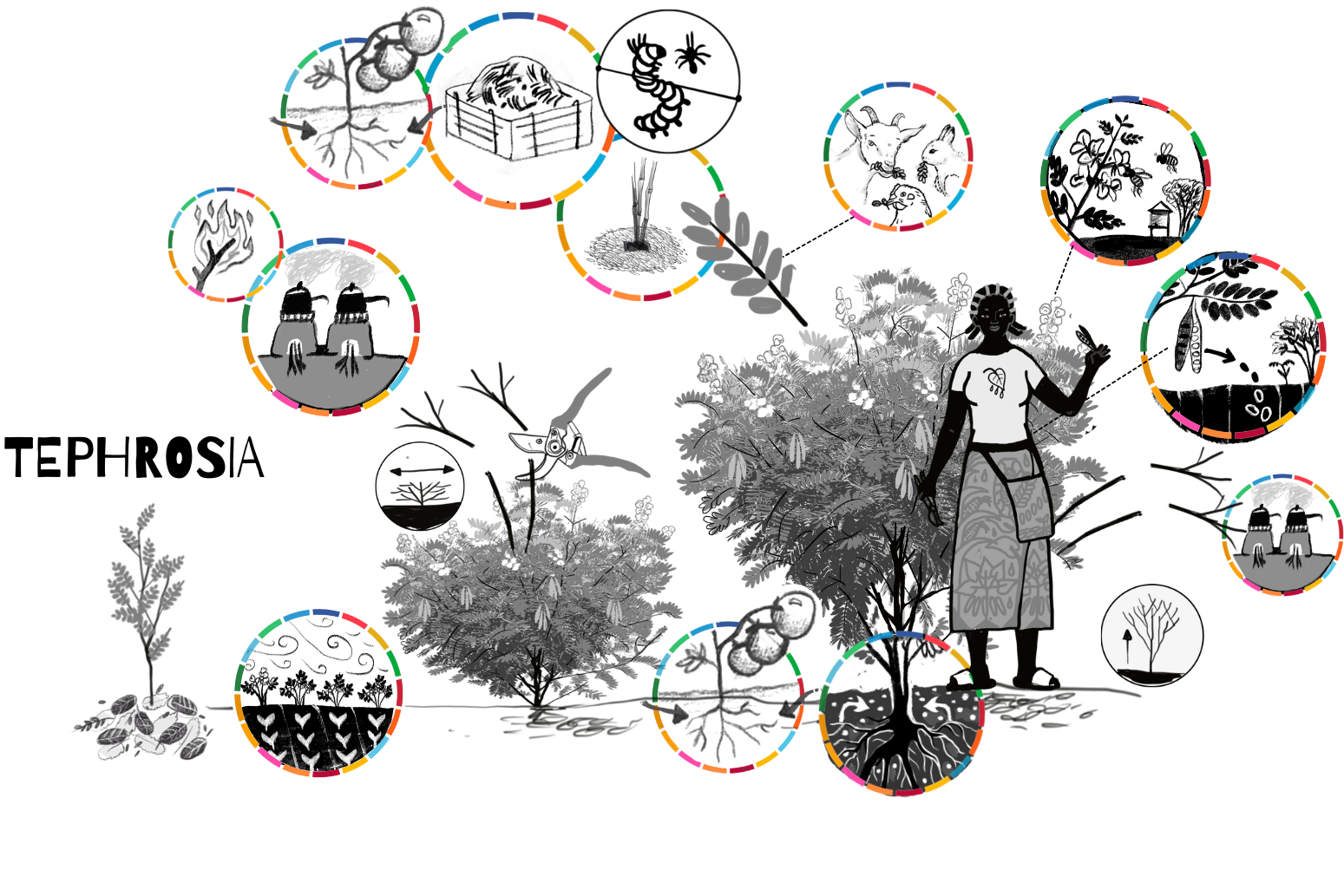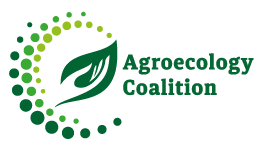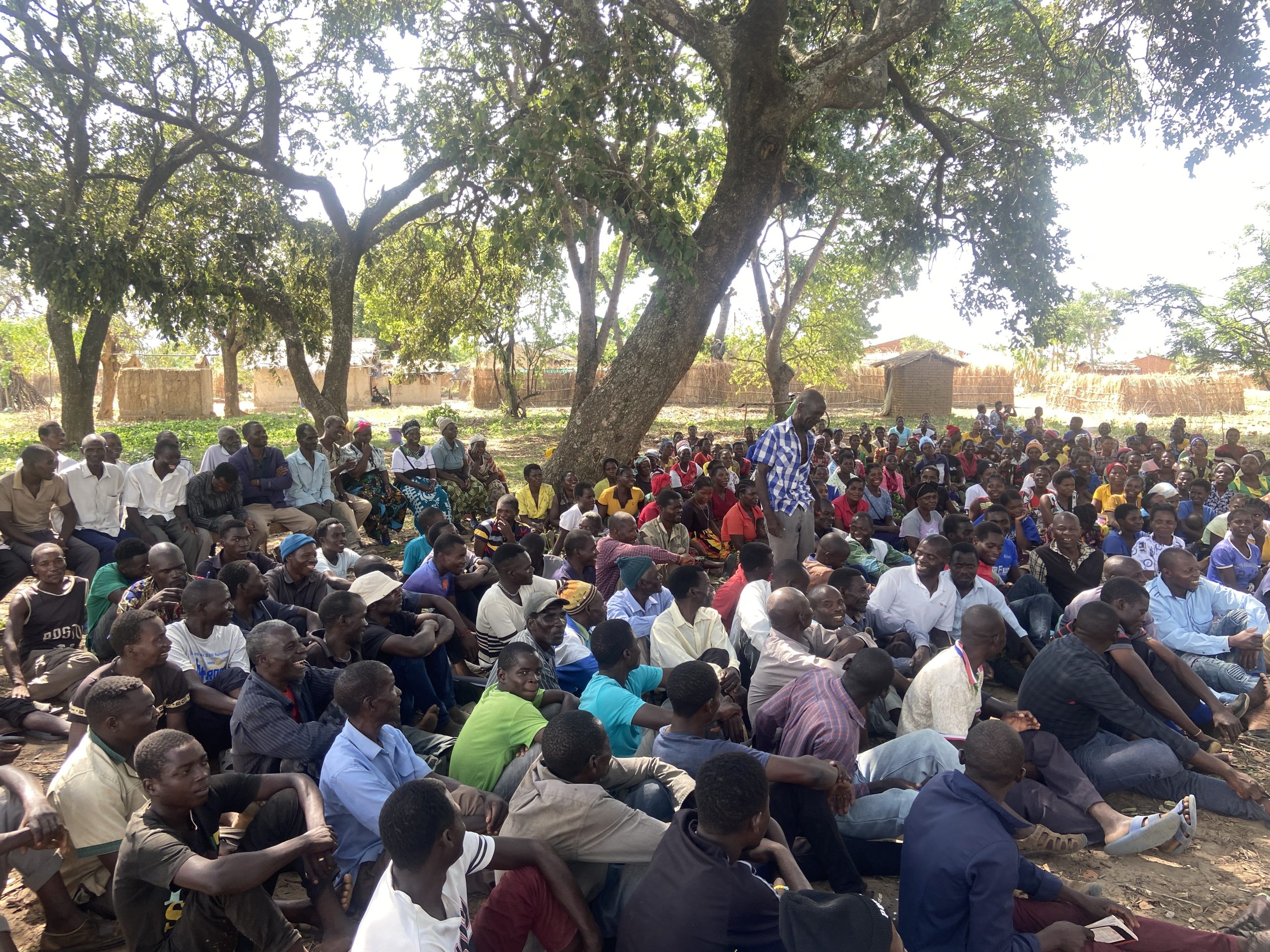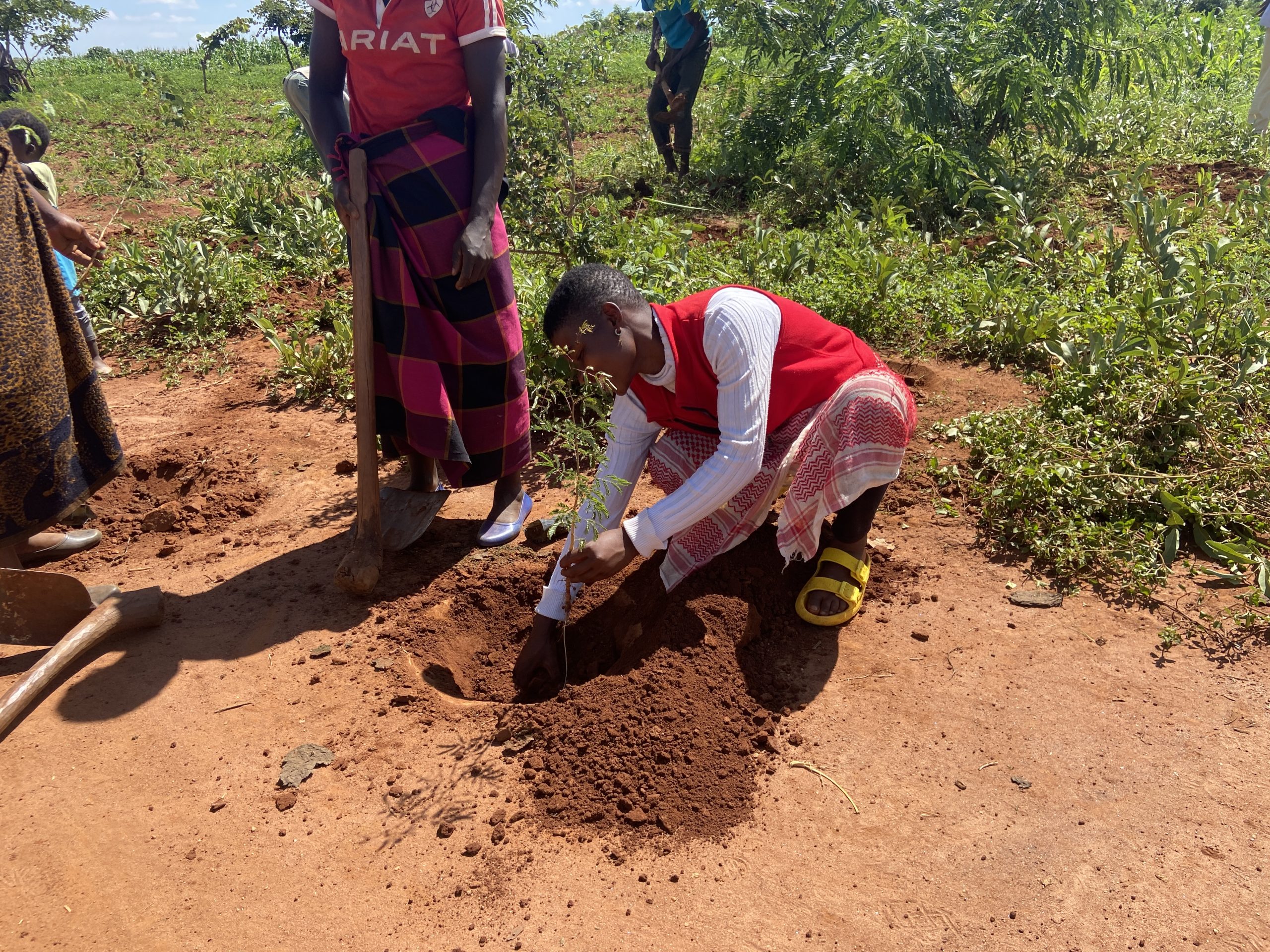Malawi Growth Poles Project
Malawi
The project improves relations with the environment and explores agroecology as a powerful path to both mitigating and adapting to climate change. The project blends agroecology principles with permaculture and resilient design.
Lead organization
Palladium Growth Poles (Feed The Future).
Partner organizations: Ministry of Natural Resources, Department of Forestry, Lilongwe Waterboard, Department of Land Resources, GLFx, Lilongwe Chapter
Country
Malawi
Timeline
2021-2024
Funding
USAID, initially planned for 5 years, ~USD1,000,000 annually on the component of national resource management.
Context
The project is implemented in the city of Lilongwe and Dedza in Malawi. Malawi is very dependent on agriculture and most of the farmers are maize dependent. The country has been experiencing erratic weather patterns throughout including, severe flooding, droughts, multiple shocks, continued land degradation, and uncertain rainfall during the growing season. With a focus of leveraging the Private Sector and the smallholder farmers around their locations, the project aimed to improve natural resource management to increase ecological resilience to constant climatic shocks through improving watershed management (building in resilient design principles focused on earth works, existing topography and the relationship to existing natural formations), improving soil health with purposeful integration of agroforestry and composting practices, increased food productivity through the introduction of diverse cropping methods and intercropping, integrating biodiversity conservation by allowing spaces to regenerate naturally along riparian buffers and addressing drivers of deforestation close to forests. The combination of a layered approach ultimately improves output and livelihoods with improved food security, income and adaptation towards consistent shocks and stressors.
Main beneficiaries
Smallholder farmers in the region, youth and community groups.
Stakeholders involved: government bodies, educational institutions, parastatal and local structures.
Strategy
Types of farms
40,000 Hectares with a focus on staple crops, vegetables, legumes and protected areas.
Objectives
- The project focuses on Integrating Watershed Management and Regenerative Permaculture perspective.
- The project aims to improve land-use practices through agroecology principles. It aims to improve raw water quality, ecosystem services, soil health and increase mitigation and adaptation efforts to climate change. It mobilizes a community lead restoration effort, developing community groups and having them as the champions.
- The project promotes environmental education around a wide range of topics from food security to climate change and the use of traditional knowledge. The process is participatory at all levels, promoting dietary diversity by improving productivity and watershed and sustainability of food systems. The aim is to improve access to healthier nutritious food, making food affordable and accessible to everyone and contradict the notion that healthy food is expensive. It also aims to improve health outcomes (e.g. decrease neonatal and maternal mortalities) and quality of life.
- The project provides a center of excellence for learning and demonstrations, including sensitizing the community on the impacts of climate change. The trainings are made in the vernacular language, not only in English. The project gives voice to farmers and listens to their stories. As follows, the project speaks through pictorials to the communities, to address impacts of climate change. The pictorial on the right explains in the specific the carbon cycle and the other one the interventions that improve productivity, soil and human health.

Projects objectives actively integrate agroecological principles through:
- Mitigation: to fight climate change principles of agroforestry, regeneration, managing woodlots (improving sequestration, soil health, biodiversity) are connected.
- Adaptation to strengthen the resilience of smallholder farmers to combat shocks and stresses: Malawi is experiencing severe floods, droughts, seasonal shocks, degraded rainfall. Resilient design and knowledge is very similar to agroecological principles.
- Respectable resource use and recycling: the project reduces the use of synthetic inputs and consequently reduces the transport costs and the carbon footprint.
- Holding water using a variety of technologies.
- Multi-functional landscape approach: All the levels of the landscape are connected (from household community to landscape level), connecting dietary diversity in the design by integrating natural species that promote biodiversity.
- Community Lead input and designs (flooding, food systems, indigenous knowledge, shared values): The project works closely with the community to develop and implement the design.
- Diversification: production systems, food types, land use, tree crops, non timber based products.
- Development of networks: training, market, exchange, demonstrations.
Activities
- Resources mapping: Based on a participatory and observational approach, the project hosted multiple in person gatherings with community groups, leaders and other stakeholders within the area to get a better idea of challenges being faced. This includes understanding challenges around resource management, resource availability, food availability, how challenges are mitigated, climatic shocks being faced, current solutions that are being implemented, knowledge based understanding of a natural environment and more specifically the larger catchment and watershed.
- Resilient watershed design development: With this mapping and the communities input, a resilient design was developed taking a stepwise approach to building watershed management through a catchment approach.
- Resilient watershed creation: Community groups were involved every step the way from the building of the designs, to the integration of solutions which resulted in the creation of a watershed : compost making, integrated terraforming techniques to manage water and soil, integration of agroforestry tree species to support soil health and management of water, intercropping and crop rotation to address food security challenges, shifting of cultivation away from riparian zones and integrating species that can support groundwater management whilst providing income sources, comprehensive education on layering interventions whilst also monitoring the implementation throughout.
- The project developed catchment committees with support and recognition from local structures, government and stakeholders.
- Activities on educating and raising awareness on the impact of climate change were implemented. For example, farmers reflected on how climate change is affecting their landscape, productivity, household resilience and food production.
- Training courses: training provided include the integration of other crops than maize (sunflowers, tree crips, non-timber based products, pollinator-friendly species) and how they manage their resources (especially water). Green corridors have also been created. .
Effects and Impacts
Evaluation methods
- At every level of the training, information is collected from the farmers either through paper format and recently through an online platform called surveyCTO. The GPS coordinates are collected in order to be able to track the changes at landscape level that looks at interventions such as community gardens, areas under multiple activities from composting, swales, deep trenches, tree planting etc and a myriad of agroecological practices.
- The community will be followed to see if there is an improvement in water management, specifically ground water and riparian zones, survival of tree seedlings, agroecological practices on farm that would improve household nutrition through increased productivity and diversity, whilst supporting biodiversity, rainwater harvesting on farm and protecting households from flooding.
Results
Forests and watershed rehabilitated, protected and conserved: achieved 13000 Ha
Riparian Zone – Mamina, Mphale, Mbalame – 600ha
Existing Forests being Protected/Conserved – 10000
Malingunde Hill – 400 Ha/ Graveyards – 600
Woodlots – 400/NR – 1000/Gala – 400
Hectares under improved SSWM (Sustainable Soil and Water Management): achieved 7428 Ha
GVH Areas: Implementing designs, continuous swales, infiltration trenches, climate smart agriculture based on agroecological principles, conversion of community based areas into large demonstrations, forest buffer protection to increase and support biodiversity restoration, building resilience to climate change.
Number of farmers practicing improved SSWM (e.g composting, intercropping, mulch, tree crops…): 3786 people
Catchment committee members
Trained in Resilient Design
Implementing Resilient Design
Micro drip incubators with CSA
Lessons Learned
- Positive relationships with local structures and community lead organisations (catchment committees, grassroot associations, local institutions) are critical in enabling success. Moreover, the project must be aligned with country level strategies, in particular in Malawi there are a lot of different legal frameworks.
- Local communities must be aware of what happens at a global level, to understand what climate change really means and it’s consequent shocks and stressors. Translating knowledge and ideas into a language they understand is critical, so the participatory co-creation and co-design process is critical in ensuring longevity and change.
- Communities need a lot of support initially through the integration of all the interventions that includes the co-designing, comprehension, implementation, maintenance and following up that would then lead to the layered interventions. Through this, a consistent incentive approach should be woven through for the communities in the beginning that can become a sustainable solution such as a revolving fund for the community, or connecting income generating activities to the trust enabling growth and self motivation.
- Through this, the private sector, despite community relationships and trust issues, who is connected to the community groups or a part of the food system in terms of being a buyer, processor or seller can directly support the groups fostering increased sustainability.
Enabling Conditions
- Global policies and designs need to engage those on the ground, in order to address this knowledge gap. Local communities and policymakers must be aware of who is being affected the most by climate change and what is impacting critically (e.g. household resilience).
- Government bodies need to have a living library of information to support the activity outputs.
- Climate and agroecology are intricately linked, and this has to come out stronger. Climate change, through both shocks and stressors, has negative impacts on our health and agroecology can be an adaptive solution.
- Sustainable food systems linked to agrobiodiversity are a right to all. There has to be a better way of sharing and exchanging information that is applicable to all levels.
- Key stakeholders were engaged at all levels. Large scale projects that are donor funded tend to work on their own without any collaboration and convening over a short period of time demanded by funding cycles.. It is necessary to harmonize our approaches and not confuse the communities to ensure uptake, sustainability.
Limiting factors:
- Having competing goals can be a limiting factor. It is necessary to have common goals with shared values – linked to the country/culture you are working in.
- Another limiting factor is the lack of knowledge and awareness.
- Projects are too short in time. There is a lack of capital to create sustainability. Communities require large investments in time, resources and education initially. Building resilience to Climate change using agroecological design takes TIME! Projects need to be thought beyond the 5-year limit towards 10 -30 years.
- Holistic approaches are shunned (Difficult but possible to implement).
- It is necessary to use monitoring frameworks that are comprehensive and applicable research that supports the integration of agroecology into large scale approaches.
Through this initiative, farming for us will no longer be the same. We have learnt that in everything that we do, we must consider environment; this is in terms of soil fertility, soil erosion management, amongst others.
Feed the future guided us in the development of our action plans alongside community mobilization towards the actual implementation of the strategies. To date spome of the activities implemented include compost manure making, swales, key line dams. We are more than thankful for this initiative because we know that we shall yield huge results in as far as soil and water conservation is concerned.
It is not possible to go out and tell farmers what they have to do with their land and pretend we know more than them. Moreover, there is a disconnect, a gap, between what’s happening at global level and at community level that must be addressed.
Contact
Afshan Omar, Director, Systems Resilience – Malawi Growth Poles Project: afshan.omar@thepalladiumgroup.com and Regenerative Permaculture Co-ordinator, Area 25 Community Hospital, Baylor foundation, Malawi, afshanloom@icloud.com
Picture credits: Afshan Omar




